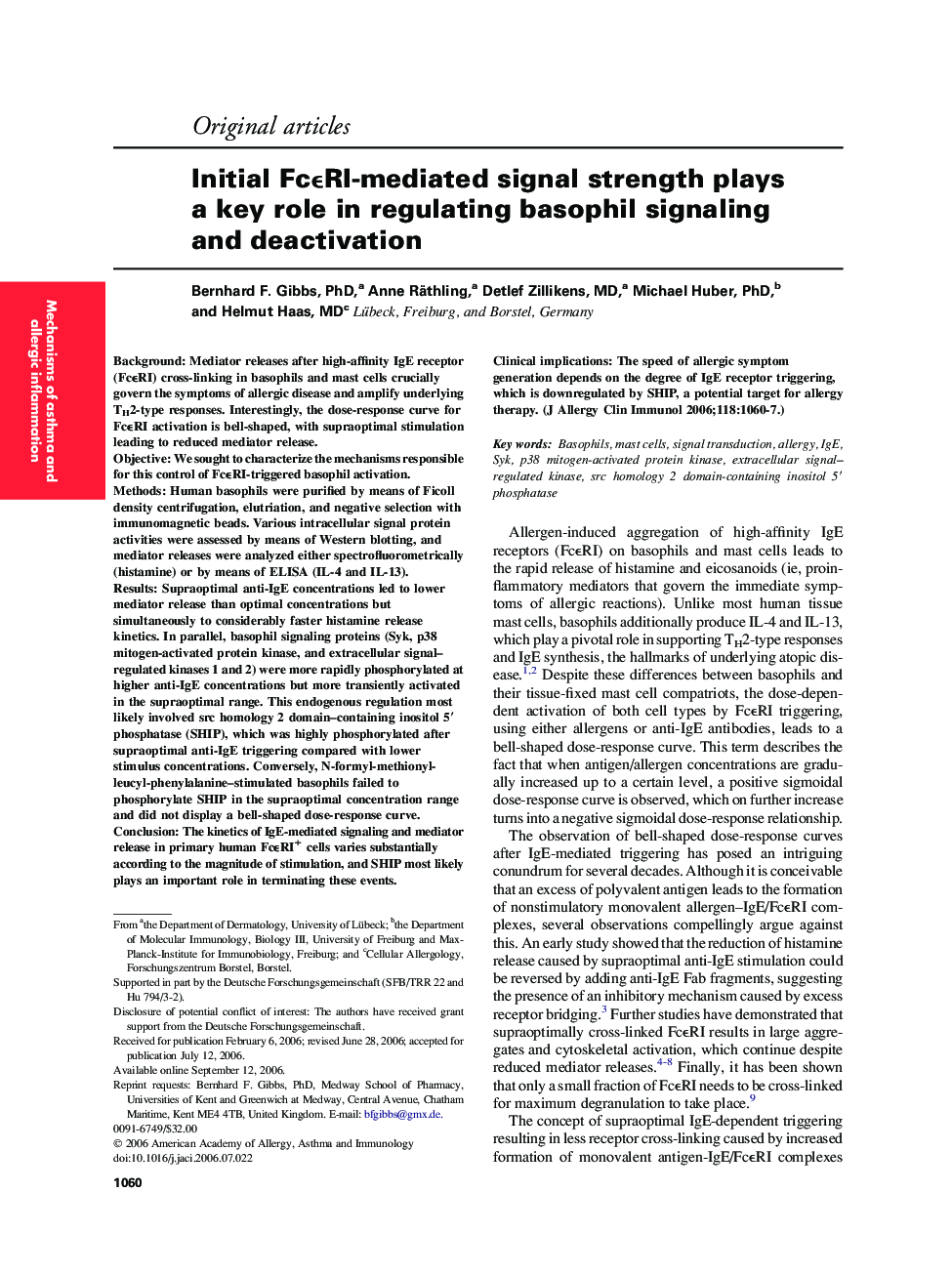| کد مقاله | کد نشریه | سال انتشار | مقاله انگلیسی | نسخه تمام متن |
|---|---|---|---|---|
| 3202551 | 1201974 | 2006 | 8 صفحه PDF | دانلود رایگان |

BackgroundMediator releases after high-affinity IgE receptor (FcɛRI) cross-linking in basophils and mast cells crucially govern the symptoms of allergic disease and amplify underlying TH2-type responses. Interestingly, the dose-response curve for FcɛRI activation is bell-shaped, with supraoptimal stimulation leading to reduced mediator release.ObjectiveWe sought to characterize the mechanisms responsible for this control of FcɛRI-triggered basophil activation.MethodsHuman basophils were purified by means of Ficoll density centrifugation, elutriation, and negative selection with immunomagnetic beads. Various intracellular signal protein activities were assessed by means of Western blotting, and mediator releases were analyzed either spectrofluorometrically (histamine) or by means of ELISA (IL-4 and IL-13).ResultsSupraoptimal anti-IgE concentrations led to lower mediator release than optimal concentrations but simultaneously to considerably faster histamine release kinetics. In parallel, basophil signaling proteins (Syk, p38 mitogen-activated protein kinase, and extracellular signal–regulated kinases 1 and 2) were more rapidly phosphorylated at higher anti-IgE concentrations but more transiently activated in the supraoptimal range. This endogenous regulation most likely involved src homology 2 domain–containing inositol 5′ phosphatase (SHIP), which was highly phosphorylated after supraoptimal anti-IgE triggering compared with lower stimulus concentrations. Conversely, N-formyl-methionyl-leucyl-phenylalanine–stimulated basophils failed to phosphorylate SHIP in the supraoptimal concentration range and did not display a bell-shaped dose-response curve.ConclusionThe kinetics of IgE-mediated signaling and mediator release in primary human FcɛRI+ cells varies substantially according to the magnitude of stimulation, and SHIP most likely plays an important role in terminating these events.Clinical implicationsThe speed of allergic symptom generation depends on the degree of IgE receptor triggering, which is downregulated by SHIP, a potential target for allergy therapy.
Journal: Journal of Allergy and Clinical Immunology - Volume 118, Issue 5, November 2006, Pages 1060–1067